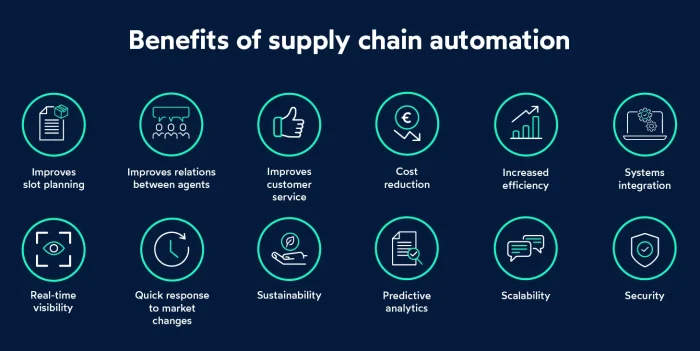The importance of visibility for full supply chain automation


Visibility is the most desired goal for all companies in the transport and logistics sector, not only to have real-time information, but also to achieve supply chain automation.
In this sense, Oscar Lopez, CEO of FIELDEAS, during the second edition of FIELDEAS Talks, emphasized that achieving end-to-end visibility in the value chain goes far beyond knowing that the goods have arrived at the point in perfect condition, but it is about automating and being more efficient.
As we saw in the post “The concept of ecosystem in the digitalization of road freight transport” to achieve full visibility and automation of the supply chain, a digital ecosystem must be generated in which there is a balance between all agents, so that all parties gain, and where they do not act individually.
By generating a digital ecosystem, the entire chain can access data and make predictions automatically, allowing it to anticipate possible disruptions and provide faster and more efficient responses. Thus, when a company offers visibility to its environment, the rest of the companies that are part of it obtain the same visibility, which will allow them to automate their processes and, ultimately, become more efficient.
The word automation is indisputably linked to a long list of benefits, which are of very high value in the case of the transport and logistics sector. Thus, supply chain automation brings the following benefits:

As we can see, all these benefits are a win-win situation for all parties: shippers, operators, transport companies and even consignees. This is key for supply chain automation to be a success and work as a seamless operation.
In addition to all of the above benefits, it is especially important to focus on how automation drives management by exception.
In short, management by exception is the proactive monitoring of the transportation process and is a medium to long-term process in which all processes are improved by applying technology wherever possible. In this way, the manager only has to focus on what the system alerts him to, allowing him to focus on other activities of greater value.
Thus, with the automation of the supply chain, management by exception is completely feasible and, in addition, the company will gain flexibility, efficiency and sustainability.
By obtaining data from different information sources, the system determines patterns, so that when they are not met, it is able to issue a warning signal to manage that incident. In the post “How to improve your transport operations with management by exception” we explain in more detail how management by exception is achieved in transport and logistics.
The key tool to obtain complete supply chain visibility is to have a platform designed for it.
In this sense, the most advanced, flexible and secure Supply Chain Visibility platform on the market, FIELDEAS Track and Trace, is capable of bringing together and connecting in a single point all the technological tools that serve as a source of information for tower control, providing full visibility of operations, which subsequently leads to automation.


07 Nov 2025
Measuring to improve: why your digital form needs KPIs
In the current business scenario, where efficiency and traceability are key to competitiveness, the digital form has become an essential resource for capturing, organizing and analyzing data in real time….

04 Nov 2025
How to integrate eCMR into your company: A step-by-step guide to digitizing transportation
We have already talked several times in this blog about the importance of starting the digital transformation of transportation with document digitalization or eCMR. On this occasion, we are going…

31 Oct 2025
How digital forms drive sustainability in industry
Digital forms have gone from being a simple operational tool to become an essential component of industrial sustainability strategies. Beyond replacing paper, its use transforms the way organizations collect, manage…

29 Oct 2025
Supply chain challenges and the key role of digitization
The 15th edition of the AECOC Supply Chain Congress brought to the table the main challenges facing the supply chain in an uncertain, volatile and highly competitive environment. Under the…